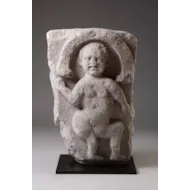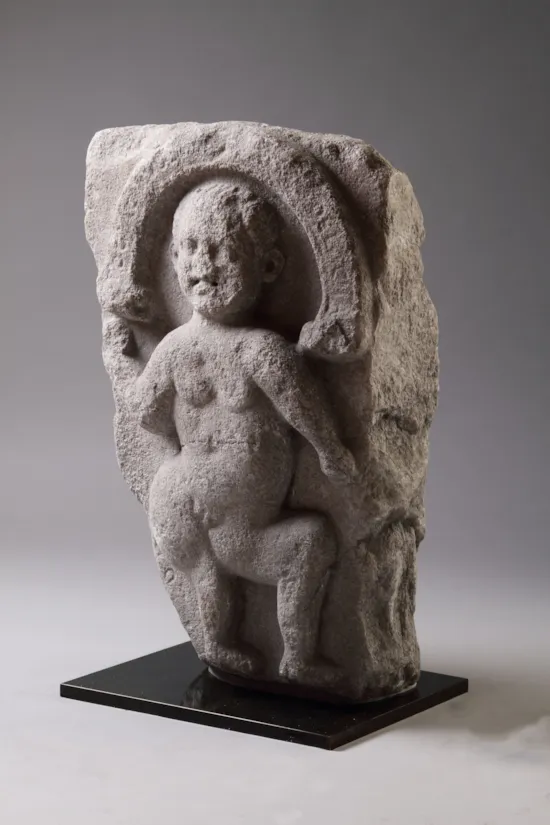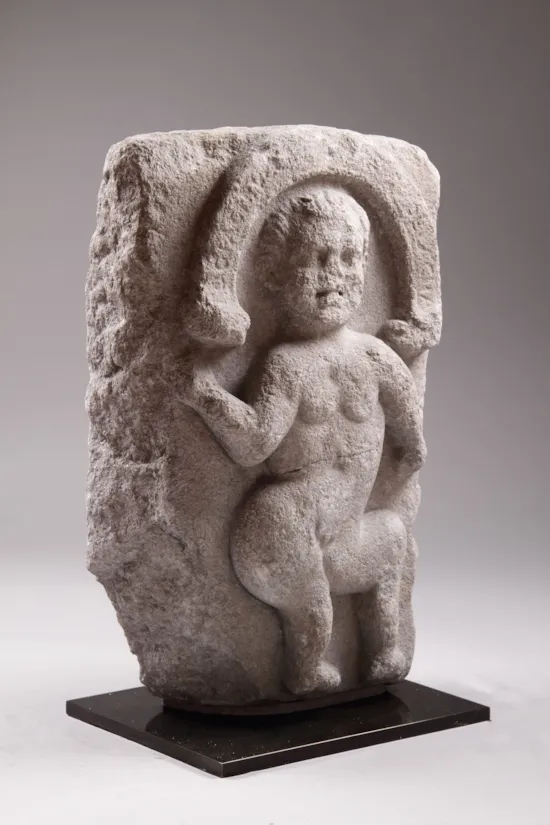Irish Celtic Limestone Slab Carved with a Relief of a Youthful Dancing Deity
A Rare Irish Celtic Limestone Slab Carved with a Relief of a Youthful Dancing Deity the Figure Showing Deliberate Sexual Ambiguity an Inscription Written on an Arc above his Head
An apotropaic divinity perhaps from a shrine set up near a sacred spring
1st - 2nd Century AD
Size: 54.5cm high, 35.5cm wide, 16.5cm deep - 21½ ins high, 14 ins wide, 6½ ins deep / 58.5cm high - 23 ins high (with base)
An apotropaic divinity perhaps from a shrine set up near a sacred spring
1st - 2nd Century AD
Size: 54.5cm high, 35.5cm wide, 16.5cm deep - 21½ ins high, 14 ins wide, 6½ ins deep / 58.5cm high - 23 ins high (with base)
At the end of the Iron Age complete human figures were more commonly represented in Celtic art and were often associated with sanctuaries and shrines which were built around sacred springs. When the Romans conquered Celtic Europe over the first centuries BC and AD they introduced methods of representing their gods that were alien to the Celts. However, the practice of keeping divine beings as realistic images in human form became common over time as they became integrated into Romano-Celtic culture. They adopted Roman ways of expressing the divine and Celtic perceptions of the supernatural became defined with much greater clarity than before. Celtic cult images from the pre Roman Iron Age of the god Cernunnos are rare, one exists on the 1st century BC Gundestrup Cauldron, but later on more than fifty representations of the youthful dancing god are recorded. A great deal of Celtic religious imagery appears for the first time in the Roman era influenced by Roman forms of expression.
Irish Celtic Limestone Slab Carved with a Relief of a Youthful Dancing Deity

SOLD




YOU MAY ALSO LIKE

